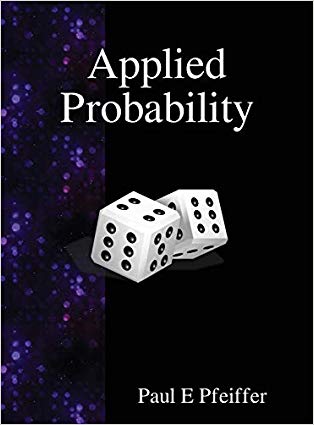 This is a "first course" in the sense that it presumes no previous course in probability. The units are numbered as they appear in the text, although of course they may be used in any desired order. For those who wish to use the order of the text, an outline is provided, with indication of which modules contain the material.The mathematical prerequisites are ordinary calculus and the elements of matrix algebra. A few standard series and integrals are used, and double integrals are evaluated as iterated integrals. The reader who can evaluate simple integrals can learn quickly from the examples how to deal with the? iterated integrals used in the theory of expectation and conditional expectation. Appendix B (Section 17.2) provides a convenient compendium of mathematical facts used frequently in this work. And the symbolic toolbox, implementing MAPLE, may be used to evaluate integrals, if desired. In addition to an introduction to the essential features of basic probability in terms of a precise mathematical model, the work describes and employs user dened MATLAB procedures and functions (which we refer to as m
This is a "first course" in the sense that it presumes no previous course in probability. The units are numbered as they appear in the text, although of course they may be used in any desired order. For those who wish to use the order of the text, an outline is provided, with indication of which modules contain the material.The mathematical prerequisites are ordinary calculus and the elements of matrix algebra. A few standard series and integrals are used, and double integrals are evaluated as iterated integrals. The reader who can evaluate simple integrals can learn quickly from the examples how to deal with the? iterated integrals used in the theory of expectation and conditional expectation. Appendix B (Section 17.2) provides a convenient compendium of mathematical facts used frequently in this work. And the symbolic toolbox, implementing MAPLE, may be used to evaluate integrals, if desired. In addition to an introduction to the essential features of basic probability in terms of a precise mathematical model, the work describes and employs user dened MATLAB procedures and functions (which we refer to as m
 This is a "first course" in the sense that it presumes no previous course in probability. The units are numbered as they appear in the text, although of course they may be used in any desired order. For those who wish to use the order of the text, an outline is provided, with indication of which modules contain the material.The mathematical prerequisites are ordinary calculus and the elements of matrix algebra. A few standard series and integrals are used, and double integrals are evaluated as iterated integrals. The reader who can evaluate simple integrals can learn quickly from the examples how to deal with the? iterated integrals used in the theory of expectation and conditional expectation. Appendix B (Section 17.2) provides a convenient compendium of mathematical facts used frequently in this work. And the symbolic toolbox, implementing MAPLE, may be used to evaluate integrals, if desired. In addition to an introduction to the essential features of basic probability in terms of a precise mathematical model, the work describes and employs user dened MATLAB procedures and functions (which we refer to as m
This is a "first course" in the sense that it presumes no previous course in probability. The units are numbered as they appear in the text, although of course they may be used in any desired order. For those who wish to use the order of the text, an outline is provided, with indication of which modules contain the material.The mathematical prerequisites are ordinary calculus and the elements of matrix algebra. A few standard series and integrals are used, and double integrals are evaluated as iterated integrals. The reader who can evaluate simple integrals can learn quickly from the examples how to deal with the? iterated integrals used in the theory of expectation and conditional expectation. Appendix B (Section 17.2) provides a convenient compendium of mathematical facts used frequently in this work. And the symbolic toolbox, implementing MAPLE, may be used to evaluate integrals, if desired. In addition to an introduction to the essential features of basic probability in terms of a precise mathematical model, the work describes and employs user dened MATLAB procedures and functions (which we refer to as m